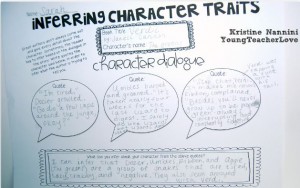In a recent conversation, a person was relaying their perception of the qualities that I possessed and those that I lacked or needed to work on. During this conversation, I found myself hearing the conversation as if I was hovering above and viewing it as a movie. I call these moments “cinematic brain epiphanies” which basically means my brain has to switch to another perspective for me to actually grasp the event happening. This conversation was so disconnected to my own belief of self. Was she talking about me? Is this how people see me?
This left me with the following question to ponder: Is our self-concept built on what we see through the looking glass and know about ourselves or is it found in the reflection we see from the eyes of another?
Our self concept is made up of the beliefs we hold for ourselves which is filtered through the view of others. Since we cannot be a fly on the wall and truly determine what others think of us, we use their words, body language, actions, etc to determine a belief system based on what we think others believe which is called meta-perspective.
What makes our sense of self so different at times from what others believe? Others determine a judgment from both visible and invisible traits that they perceive. R.D. Laing (2008) states, “A direct perspective is taken when you observe and interpret another’s behavior while a meta-perspective occurs when you try and, Infer another’s perceptions or understand their experience.” Our outlook and self-concept is constantly being shaped by how others treat and react to interactions with us. It is shaped by how we both perceive and respond to these perceptions. When two perspectives are disconnected it leads to a feeling of misunderstanding and a lack of interpersonal connection.
Both our own self-concept and meta-perspective are shaped by two elements: visible and invisible self. When our students peer through the looking glass they are showing others their visible self. Their appearance, their actions, language, etc. help to share how they feel about themselves and the “visible self” they show others. What we forget to remind our students is that others are interpreting their actions and equating these with character traits or emotions. For example, you do not speak up when you talk which can be interpreted by some as shy, disinterested or disrespectful. All three different interpretations of the same action. What we show others is the data they use to interpret who we are. Our actions and words should speak louder than our visible self and ensure it is the self we want others to see. A lack of self confidence or self-concept can skew our behaviors around someone and therefore affect their perception of us.
My original question: Is our self-concept built on what we see through the looking glass and know about ourselves or is it found in the reflection we see from the eyes of another? Both. Our self concept is built by what we see every day but also what we project to others. We must develop a true sense of who we are looking at in the mirror but also our words, actions, gestures, body language, etc. should show the world who we are as well.
My “epiphany” was that I had not allowed this person to see who I was because I did not reflect it. As you plan for the new school year, begin to explore resources and ideas to help students develop a positive sense of themselves AND to learn that their invisible self is shown through the visible. Choose literature with strong and interesting characters that show students how actions, dialogue, thoughts and feelings make direct connections to character traits. By our students making this connection, they can develop a stronger sense of who they are and make connections that how they act and do is creating their self image, meta-perception AND character.
A few Resources:
From: www.youngteacherlove.blogspot.com
Character Trait List:
http://www.readwritethink.org/files/resources/lesson_images/lesson175/traits.pdf
Book List to teacher Character Traits:
